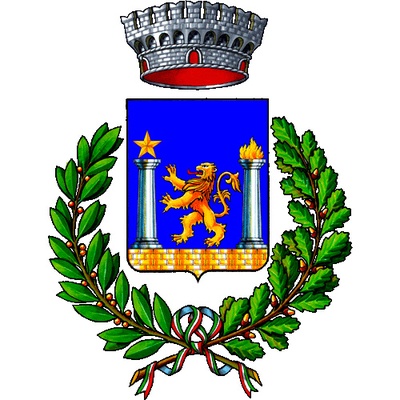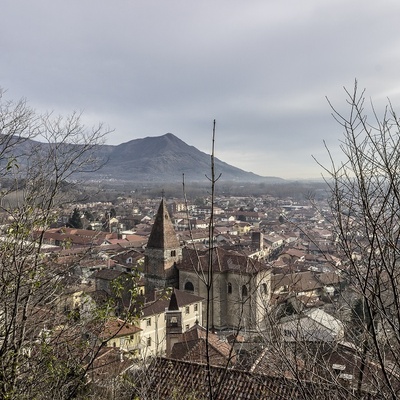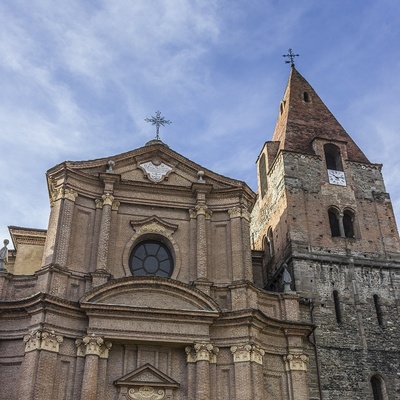
Piazza XXV Aprile, 4, 10057 Sant'Ambrogio di Torino
The birth and development of the village of S. Ambrogio were closely connected to the events of the overlying monastery of S. Michele della Chiusa, founded in the last decades of the 10th century on the top of Mount Pirchiriano, and the France road, serving as a logistical and administrative base for the abbey. The historical core of the town is the Piazza IV Novembre where the remains of the first village church and the dominant castle, located along the path leading to the Sacra di S. Michele, are still preserved today.
The ancient medieval cells, incorporated into the modern urban fabric, can be seen along the Via Antiche Mura, the curtain wall that enclosed the village in an irregular quadrilateral centered between the church of S. Giovanni Vincenzo and the cylindrical tower, while the two entrance gates opened on either side of the France road.
The current church, built between 1760 based on a design by Bernardo Vittone, boasts numerous valuable furnishings inside, such as the altar piece of Milocco, a refined Via Crucis by Raptus, and the 17th-century Ancona del Rosario by Bernardo Lanino. The church’s three-nave basilica layout was originally oriented towards the east, but starting from the 12th century, the increased pastoral needs of the inhabitants, along with the transfer of the relics of Saint Giovanni Vincenzo, a blessed hermit from Mount Caprasio, from Celle to S. Ambrogio, prompted the expansion of the church and the construction of a large bell tower. Above the church at the beginning of the path leading to the Sacra di San Michele stands the abbey castle (1266) with a complex succession of building phases and reinforcements with bartizans and machicolations, as revealed during excavation campaigns conducted within the framework of the castle's restoration and transformation into a hospitality structure. It served as the residence of the castellano of S. Michele and place of justice administration, and also occasionally hosted the abbots of Clusini.
The town, a center of commercial traffic thanks to the presence of the Ancient France Road, developed from the 19th century with the arrival of the railway, thanks to the establishment of the first factories in the Susa Valley, the Fratelli Bosio Cotton Mill (1871). The complex includes, in addition to the production plants, also housing for the employees and Villa Neveux, the owners' residence, which is now the municipal seat. The imposing industrial structure is organized in four parallel wings with large internal courtyards, in exposed brick with wooden lambrequin decorations on the eaves, typical of the Eclectic artistic style of the time.
The patronal feast of San Giovanni Vincenzo takes place in November according to ancient rites followed by the Abbadia confraternity carrying the relics of Saint Vincenzo in procession.
Among the events of Gustovalsusa, the Meliga Day with the market exhibition of local artisans and producers, celebrates the typical artisanal production of the town, the fragrant biscuit made from corn flour, the meliga pastries.




